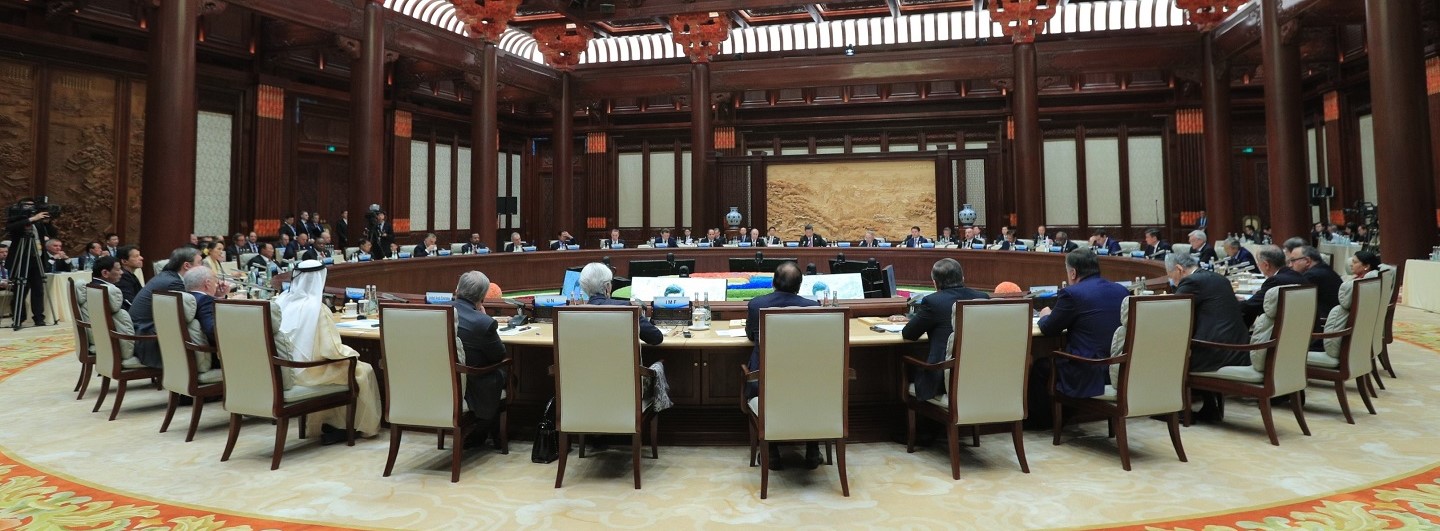Remarks by PM Lee Hsien Loong at the Leaders' Roundtable at the 2nd Belt and Road Forum for International Cooperation in Beijing, China, on 27 April 2019.
Your Excellency Mr Xi Jinping, President of the People’s Republic of China
Excellencies
Thank President Xi and fellow leaders for their insights and perspectives.
Singapore has been an early and strong supporter of the Belt and Road Initiative (BRI).
We see the BRI as benefiting both China and the world.
Singapore and China are already working on promoting financial connectivity, infrastructure connectivity, as well as professional and legal services under the BRI.
One significant BRI project which is underway is what we call the Chongqing Connectivity Initiative, particularly International Land Transport Corridor. This is a rail link which connects Chongqing to Qinzhou Port in Guangxi on the Gulf of Tonkin which opens a shorter connection for China’s Western provinces out to the world and also strategically links the Silk Road Economic Belt and the new Maritime Silk Road.
China’s international influence has grown as China has developed and its share of global GDP has increased. The strategic balance has shifted and continues to shift. How China performs its prominent global role, and how the international community adjusts to China’s growing influence, will determine whether all of us, and all our countries, can enjoy continued peace and prosperity. China naturally wishes to occupy a place in regional and global affairs commensurate with its strengths and influence. And other countries expect China to strengthen its commitments and contributions to the global system. The BRI is a good platform for China to work together with other countries on these objectives.
Now into its sixth year, the BRI has indeed helped deepen China’s linkages with other countries. China is now exporting capital and expertise. Since 2015, China’s Overseas Direct Investment (ODI) has exceeded its Foreign Direct Investment (FDI), in other words, outbound is more than inbound and this is a significant turning point. And China is helping to meet the infrastructure deficit of developing countries in the region, estimated by the Asian Development Bank to be about US$26 trillion between now and 2030. New roads, ports and railways built under the BRI have enhanced physical connectivity between cities and countries, and in time should catalyse economic growth.
For the next phase of the BRI, we should consider how to to maximise the long term benefits of this strategic initiative beyond improving physical infrastructure.
I would like to suggest three areas for discussion. First, the BRI should develop indigenous capabilities. Countries will benefit more if connectivity projects develop more local talent, facilitate further technology transfer, and involve more local businesses. This will not only improve the quality and sustainability of the infrastructure projects, but also give local parties a greater stake in the projects’ success.
Second, the BRI should go beyond traditional bilateral models of cooperation. Connectivity need not limited to hub-and-spoke arrangements with China. Because China can partner other countries on projects in third countries. And this can bring together a wider range of capabilities and resources. Open new doors to projects which may otherwise not be feasible. And enhance trade and economic cooperation not just between other countries and China but among other countries too.
Third, the BRI should take an inclusive, transparent and market driven approach. Connectivity projects should be economically viable and financially sound. This will improve accountability and risk management and increase the projects’ overall chances of success, and inspire greater confidence in future projects. A prospering region with China fully integrated linked together by an open regional cooperation infrastructure will reinforce the open, rules-based international order and multilateral trading system, which has benefitted all of us.
I hope to hear more ideas from fellow leaders on reaping strategic benefits from BRI’s connectivity projects. The BRI can contribute much to a peaceful, orderly shift in the global order, and support China’s constructive international role commensurate with its size and potential. And Singapore looks forward to cooperating with China and other countries to unlock more opportunities through the BRI.
Thank you.
. . . . .
Explore recent content
Explore related topics

